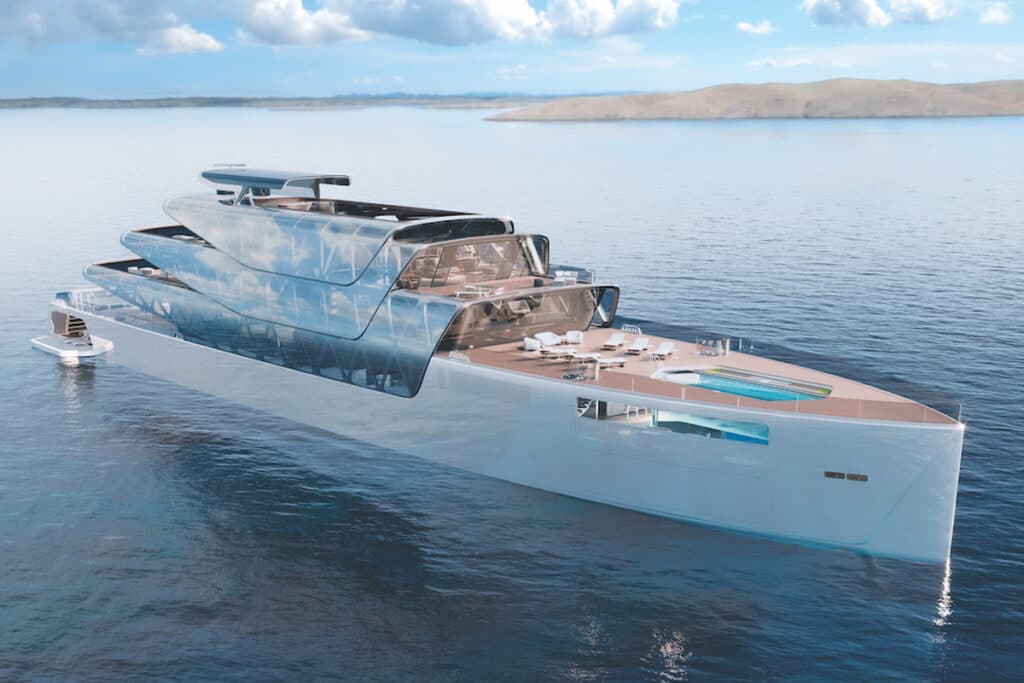
The concept of 3D printing is not new when it comes to boat and yacht construction, but Project Pegasus—unveiled at the start of 2023 and now listed for sale with Denison Yachting—is a bold vision of how the technology could be used to create an entire superyacht.
Several years ago, we reported about ways that builders worldwide were already embracing 3D printing for everything from boat molds to parts. We also noted that the IYRS School of Technology and Trades was teaching students the basics of 3D printing, setting up a future where ideas could become reality as the technology matured.
Italian designer Jozeph Forakis says that time is now, and the team of people surrounding him on the idea is getting bigger. Forakis’ 288-foot Project Pegasus concept yacht would be the world’s first 3D-printed, solar-electric/hydrogen hybrid superyacht, with zero emissions and with a “Tree of Life” hydroponic garden for fresh food and air purification.
Article At-A-Glance
- The 288-foot Project Pegasus is a concept yacht that’s listed for sale with Denison Yachting.
- Project Pegasus would be the world’s first 3D-printed, solar-electric/hydrogen hybrid superyacht.
- The designer is Jozeph Forakis, who is based in Italy and known for his work with CL Yachts.
- Lateral Naval Architects in the United Kingdom also worked on Project Pegasus.
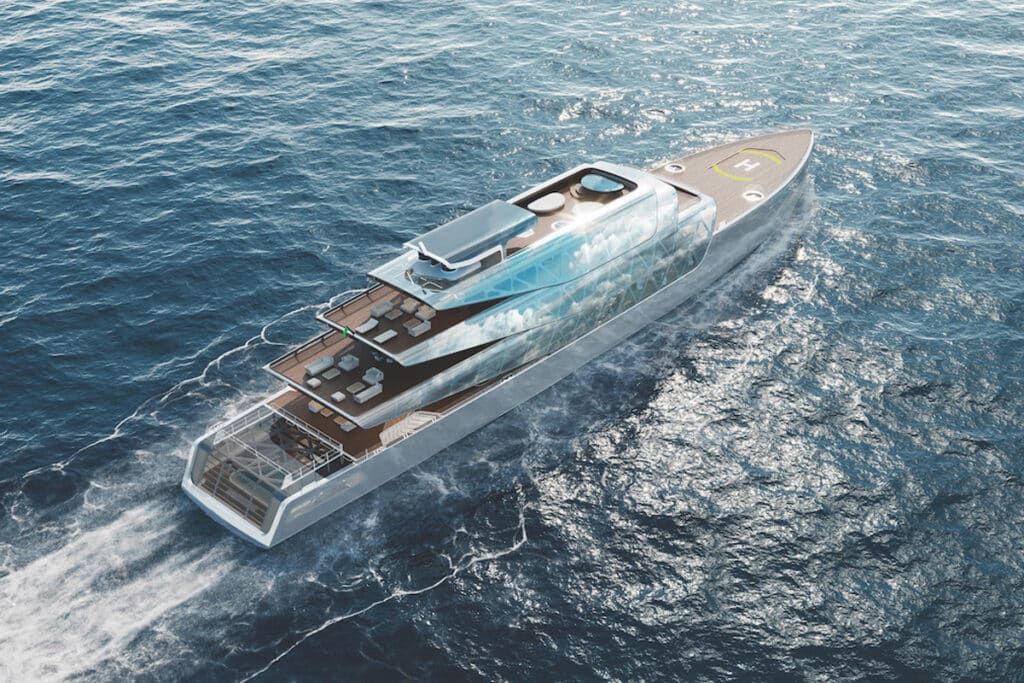
The Project Pegasus Vision
Forakis says his goal with Project Pegasus was to create a zero-emissions yacht that seems invisible in terms of design and environmental impact. He did not create the concept yacht as a design showpiece that never has a chance to be built. “All her core technologies are based on today’s reality,” he says. “It’s only a matter of time before all yachts are made this way. Today, together with Denison and Lateral, we embark on a journey to accelerate towards that future.”
An ‘Audacious Challenge’
James Roy, managing director at Lateral Naval Architects, calls Project Pegasus “an audacious challenge in the field of structural engineering, energy architecture and manufacturing.” In fact, everyone involved with the project says it’s on the bleeding edge of what’s achievable today. Alex G. Clarke, the broker who represents the project at Denison Yachting, says the concept “pushes the boundaries of what is possible.”
Clarke added: “The smart technology surrounding it—from fuel cells to hydroponics providing fresh air and food, to zero emission and the use of glass and solar panels—is very inspiring to me. I do feel this is more than a concept, and I would love to see a shipyard or owner get involved to help make her a reality.”
How the Team Came Together
Forakis gives special thanks to Marisa Ronchi and Ottaviiano Iacono of SuperyachtOne for believing in the Project Pegasus concept and introducing him to the sales broker, Clarke, at Denison Yachting. “We couldn’t ask for a better foundational team to bring this dream to reality,” Forakis says.
Clarke is no stranger to embracing big, visionary concepts. He was the sales broker who did Denison’s first $10 million-plus bitcoin deal, and, more recently, he’s been talking about ways that technology surrounding nonfungible tokens, or NFTs, might become useful within the superyacht industry.
In that context, 3D-printing a whole superyacht seems quite down-to-earth. The technology at least creates something that people can touch and feel.
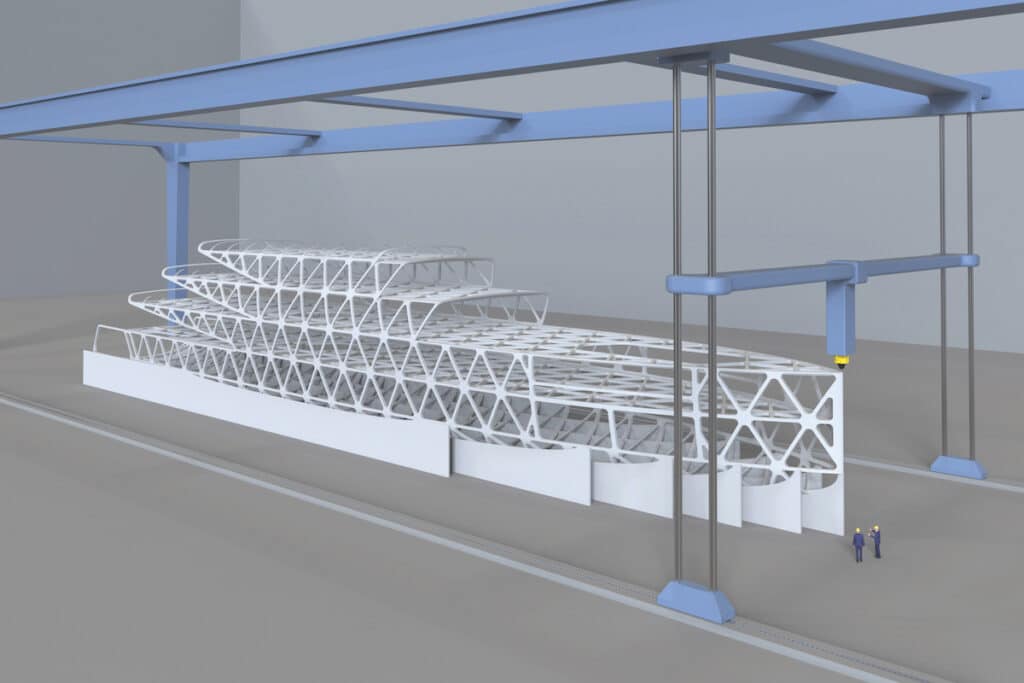
The Project Pegasus Design
It was big news in 2019 when the University of Maine created the world’s largest 3D-printed boat: a 25-footer called 3Dirigo. That team set three world records: for the largest 3D-printed solid part, the largest 3D-printed boat and the largest 3D printer.
Designing a 288-foot yacht that could be built from similar technology less than five years later is no small feat, but that’s what Project Pegasus purports to be.
The Framework
Robotic 3D printing would be used to create a mesh framework for Project Pegasus, integrating the yacht’s hull and superstructure. Forakis says the result would be “an extraordinarily strong and lightweight structure that can be produced using less energy, material, waste, space and time compared to conventional construction.”
The superstructure would have multi-tiered glass wings that reflect the clouds and sky. At certain angles and in certain lighting conditions, the lattice framework of the 3D-printed structure would become visible.
According to Forakis, “The dramatic, triangulated structure allows light to penetrate all levels of the interior while framing the remarkable views in all directions.”
The Reality of Technology
The whole team involved with Project Pegasus says it’s possible to achieve the vision with technology that exists today, but there is no denying the fact that some of that technology may need a bit more time to develop in order to make the yacht a reality.
As Roy, with Lateral Naval Architects, says: “We look forward to exploring the boundaries of feasibility, technology readiness and how these can be accelerated.”
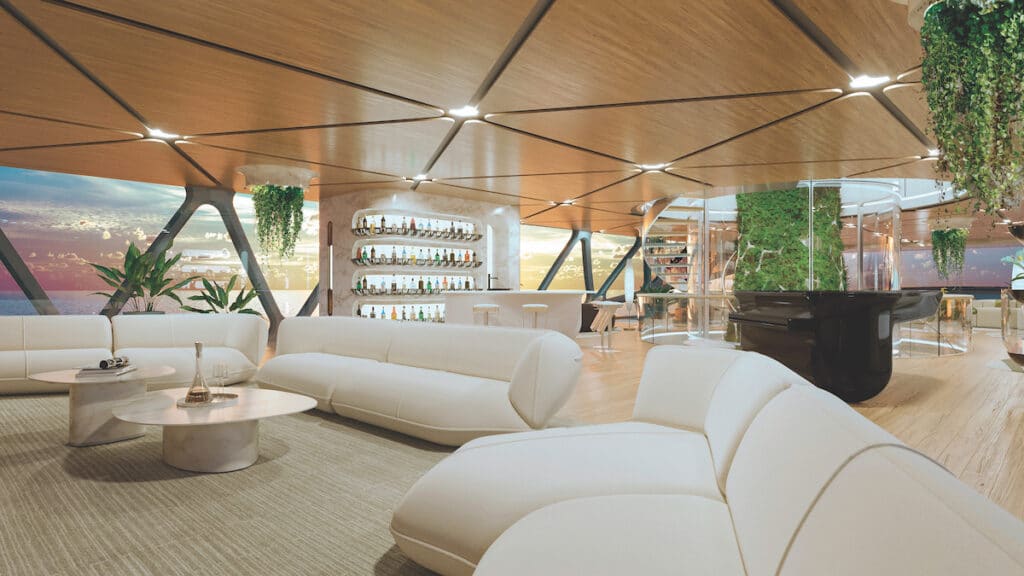
Is Jozeph Forakis for Real?
Sometimes, yacht designers create audacious concepts just to get noticed. They might draw a yacht that looks like a spiderweb, or that could transform into a plane or a submersible. Their ideas are often based on imagination and not necessarily grounded in reality.
Forakis is different. He’s known as a visionary designer, but he’s also spent the past few years affiliated with one of the most respected builders of bluewater, go-anywhere vessels: CL Yachts, a subsidiary of Cheoy Lee.
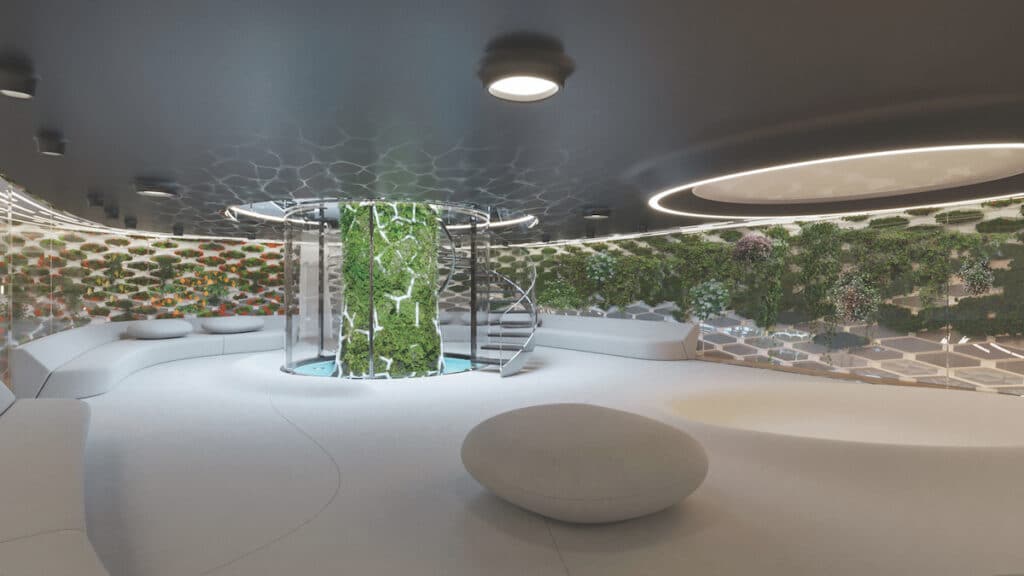
Partnership with CL Yachts
Forakis’ partnership with CL Yachts was announced in 2019, after the builder brought him aboard to act as creative director for its next generation of yacht designs. Forakis was put in charge of exteriors and interiors on the vessels, starting with the CLX96.
Even back then, Forakis was using language that tapped into a desire to push boundaries in ways that were new for the yachting industry. He chose the color orange for the new CL Yachts brand and went on to explain why: “I am very strategic when it comes to these things. In our research, we found that, in the world of yachting, there are many ‘me too’ boat designs and many ‘me too’ brands and colors. Orange is young and energetic, and rarely seen amongst yacht or other luxury brands. This is part of our ’blue ocean strategy’ to communicate a true alternative in the market with an alternative, authentic vision.”
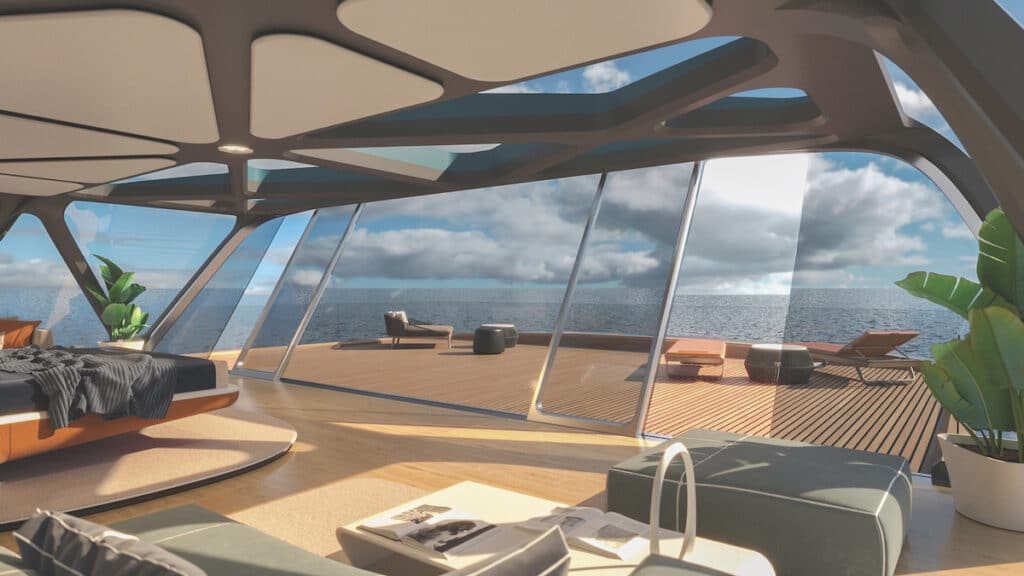
Forakis’ Real-Life CLB80
Most recently, CL Yachts announced its CLB80, with interiors and exteriors by Forakis—yet again proving that the designer knows how to turn ideas into reality. The boat will fall in the builder’s lineup between the CLB72 and the flagship CLB88.
CL Yachts says the creative process included emphasizing onboard comfort, rather than focusing solely on raw performance.
And with this design, too, Forakis pushed boundaries. “One distinctive aspect that sets this model apart is the evolution of the unique stepped side windows,” the builder says. “These carefully crafted windows not only infuse a modern touch but also enhance visibility, allowing natural light to flood into the living spaces.”
Frequently Asked Questions
How long will it take to build Project Pegasus?
No timeframe has been established for construction, and, in some cases, the technology itself might have to be augmented before construction could begin.
Are hydroponics new on yachts?
At the scale of Project Pegasus, yes, but not in general. Some sailors have had hydroponic gardens aboard their yachts for years, to ensure the availability of fresh foods while cruising in remote destinations.
Is anyone building a zero-emissions yacht today?
Several companies are promoting these types of designs. One in-build version is the 226-foot Project Zero that Vitters is constructing in the Netherlands, with a sail plan that is projected to generate power equivalent to a modern wind turbine.
Does Jozeph Forakis, the designer of Project Pegasus, only design yachts?
Nope. He works in many spheres, including housewares, lighting and wearable tech.
Where can I learn more about Project Pegasus?
Visit denisonyachting.com









